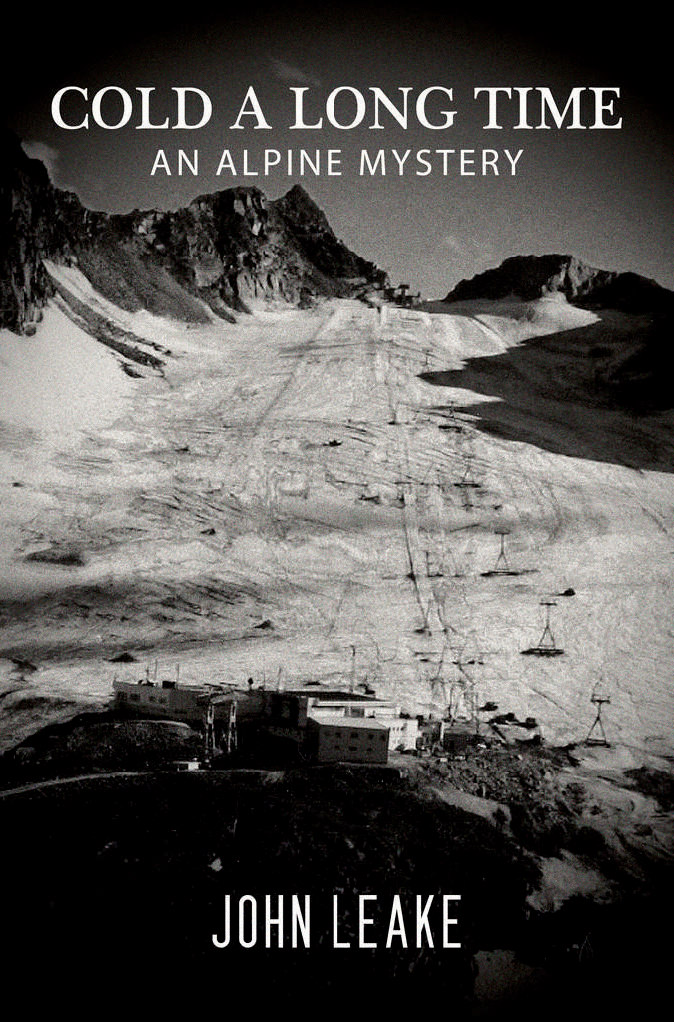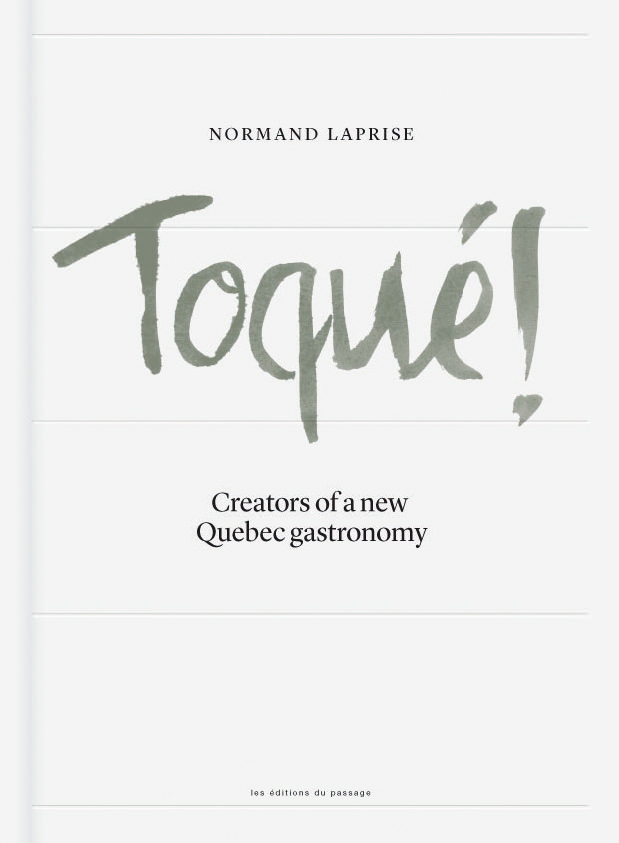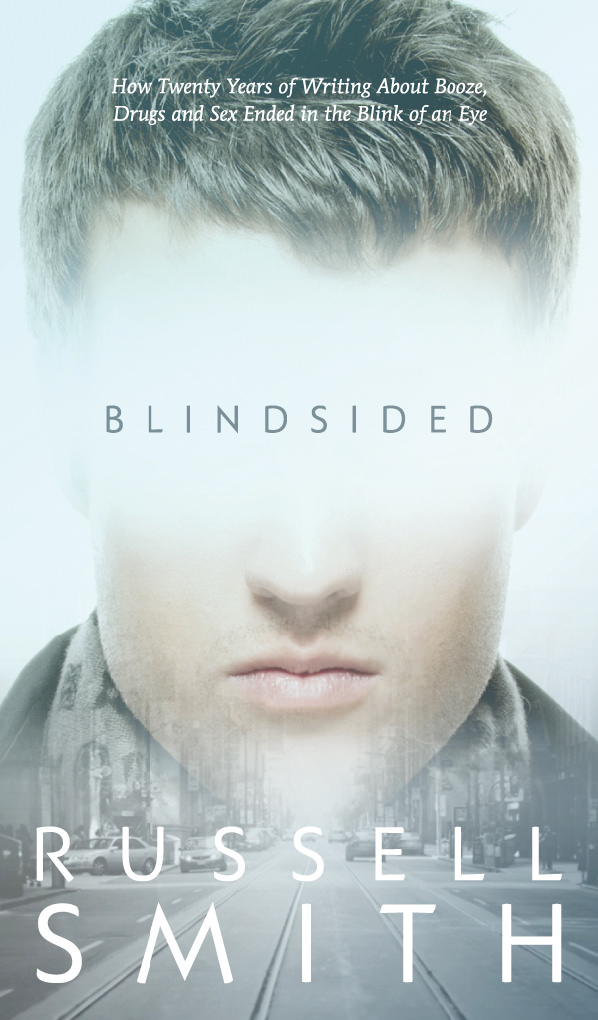-
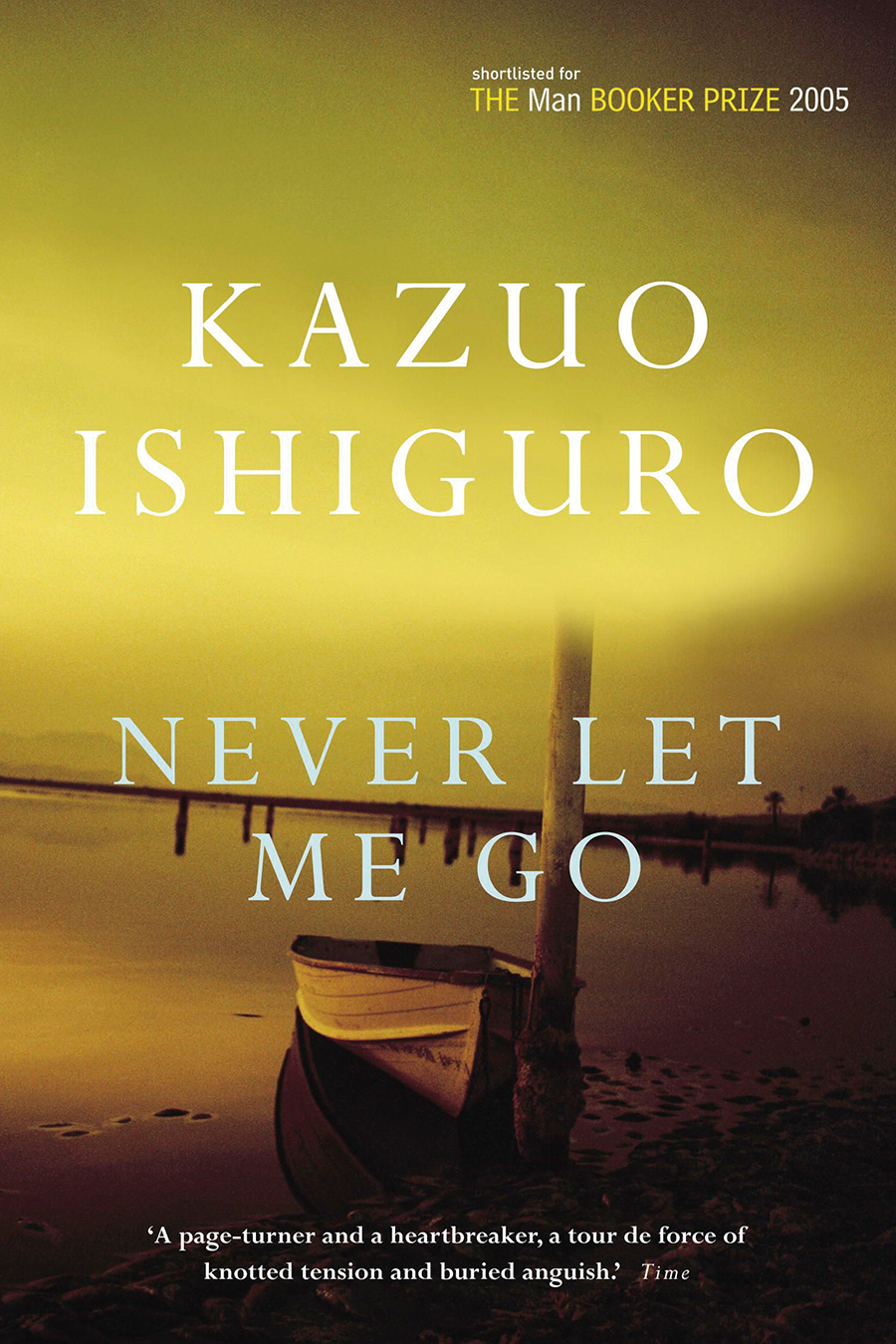
Never Let Me Go by Kazuo Ishiguro.
-

Stiff: The Curious Lives of Human Cadavers by Mary Roach.
-
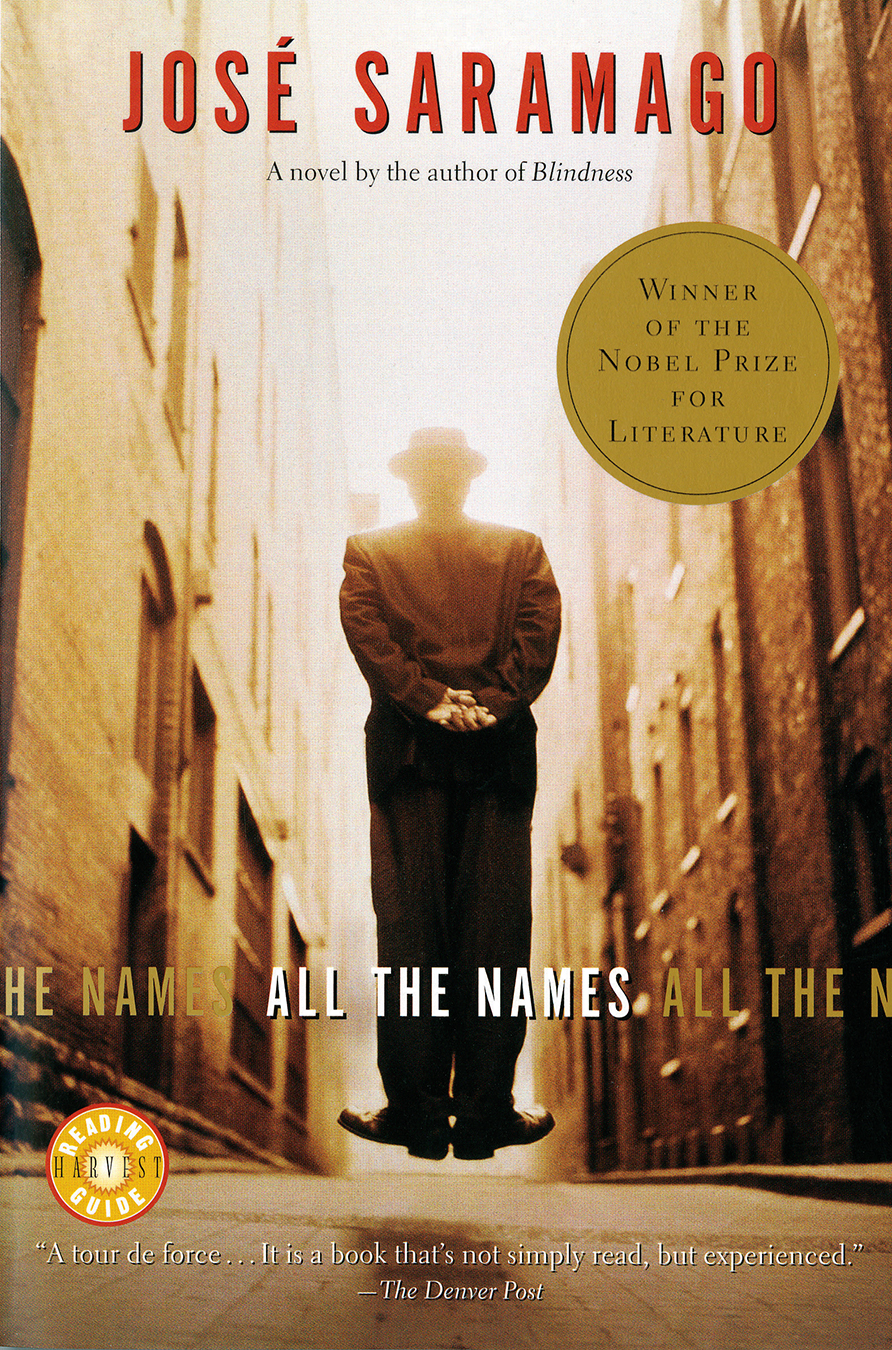
All the Names by José Saramago.
-

On the Beach by Nevil Shute.
Off the Shelf: Musings on Mortality
Books by Mary Roach, José Saramago, Nevil Shute, and Kazuo Ishiguro.
The next time you have the urge to do some reorganizing, try emptying out a shelf of books and using it to display, in order, those you’ve most recently read. Yes, it may be a challenge for those alphabetizers among us, but it can be an illuminating experience. It’s not at all a bragging list, or a wall of fame; include all books, ones you’ve enjoyed and ones you haven’t, those you’re proud of and those you can’t believe you picked up in the first place but did, for whatever reason. Now step back. What connects them? Why did you decide to read the books—were they suggestions from friends, purchased based on reviews, random pickups from a garage sale? Think of it as book meditation; examining not only what we read, but how, is time well spent.
Stiff: The Curious Lives of Human Cadavers
Of late, my reading trail has meandered through the forests of mortality and inevitability. Sombre subjects for the dog days of summer, perhaps, yet appropriate as the days grow darker. Mary Roach’s Stiff: The Curious Lives of Human Cadavers, non-fiction, can’t help being a bit dark; it’s a discussion of the human body, and what happens to it following death. Roach combines historical research with her first-hand accounts of visits to morgues, funeral homes, science labs, and many other locations, documenting her (often very amusing) conversations with those who deal with the dead on a daily basis.
The first chapter, titled “A Head is a Terrible Thing to Waste”, opens with the author visiting a university medical centre in which students learning the ins and outs and nips and tucks of plastic surgery are practising on human heads. “Never before today have I seen a head in a roasting pan,” she writes. “But here are forty of them, one per pan.”
This sets the tone of the book, which is thought provoking and more than a little gruesome in several places. The other chapters have names like “Dead Man Driving”, which discusses corpses as crash test dummies, and “Eat Me”, all about cannibalism. Each topic includes a litany of factoids. (Did you know that in anatomy labs in Victorian medical schools, body parts for dissection were in such short supply that students could pay their tuition in corpses?)
In the final chapter, titled “Remains of the Author”, Roach discusses plans for herself following death. She ponders becoming a medical skeleton, donating her brain to science, or leaving her body to an anatomy lab for dissection. (Regarding this last possibility, she has some concerns: “The thought of young people gazing in horror and repulsion at my sagging flesh and atrophied limbs does not hold strong appeal. I’m forty-three, and already they’re doing it.”)
Despite her sometimes humorous take on things—and the book is funny—Roach addresses two serious themes: the way we look at (and accept, or not) death, and the respect with which we treat those who have died. She makes the point that the way in which the living cope with the dead requires vast amounts of masking what is really happening. “When you get right down to it, there is no dignified way to go, be it decomposition, incineration, dissection, tissue digestion, or composting,” she writes. “They’re all, bottom line, a little disagreeable. It takes the careful application of a well-considered euphemism—burial, cremation, anatomical gift-giving, water reduction, ecological funeral—to bring it to the point of acceptance.” And in her acknowledgements, she thanks—by name or pseudonym—the various bodies she encountered in the labs, funeral homes, and dissection rooms: “You are dead, but you’re not forgotten.”
All the Names
The dead are also prominent in José Saramago’s novel All the Names, although their memories are not given nearly the same respect. The main setting is an unnamed country’s Central Registry of Births, Marriages, and Deaths, a sort of bureaucratic black hole of an institution in which the records relating to the aforementioned events of all citizens are filed. Perhaps not filed well, however; rather, they are haphazardly (and just hazardly) organized in towering shelves from which cascading paper avalanches occur regularly. The cavernous stacks are dangerous; “a researcher became lost in the labyrinthine catacombs of the archive of the dead … He was discovered, almost miraculously, after a week, starving, thirsty, exhausted, delirious, having survived thanks to the desperate measure of ingesting enormous quantities of old documents.” (Saramago likes to write in blocks of sentences, eschewing periods and quotation marks. It’s a technique that lends something different to each novel; here, it evokes the ongoing and never-ending paperwork, almost claustrophobic in its ubiquity.)
Within these towers of files toil the clerks, including Senhor José, who has worked at the Central Registry for 25 years. Outside of his job, his only hobby is collecting data on famous actors and other celebrities, and he eventually begins to enter the Central Registry at night, long after it has closed, to copy information for his personal files. After returning from one of these expeditions, he discovers that he has accidentally brought with him the card of an unknown woman. He begins to obsess over her (the reasons for which he himself admits he doesn’t understand, only believing, cryptically, “that he is the only person who can move the final piece on the board … at the risk, if he does not do so, of leaving the game at stalemate for all eternity”), and soon he shirks his responsibilities as a clerk in order to track her down.
The story almost has the feel of a fairytale, with the hero on a quest in a hostile (or at least extraordinarily bleak) land. The life and character of Senhor José is enchanting; this clerk, accustomed to and indeed satisfied with his drudgery, is suddenly caught up in an adventure of some higher calling. And yet he is trapped. The picture Saramago paints of the Central Registry and the city in general is one of isolation, of silent, grey spaces and perpetual rainy afternoons. Similarly, much is made of the notion that after we are gone, we exist only in memory and paperwork; for Senhor José and the rest of the clerks, the breadth of life consists mainly of transferring a paper record from one shelf of files to another.
On the Beach
Nevil Shute’s 1957 novel On the Beach is the story of the aftermath of war, a “short, bewildering war … the war of which no history had been written or ever would be written now.” A nuclear holocaust has come and gone, and a scant few survivors living in Australia await their end from radiation in the atmosphere, which is slowly making its way south.
Yet this is not a typical end-of-the-world novel; it is not a tale of survivors attempting to eke out some miserable existence in a destroyed world (the kind so memorably and depressingly realized in Cormac McCarthy’s The Road), and there’s no dramatic and action-packed last-ditch attempts to save the human race, nor even a mass exodus. It is final, and inescapable; as one character notes, “After all, there’s not much comfort in leaving home … and have the same thing happen to you a month or two later.”
There’s no escape, and because of that, life continues its fairly ordinary course. When the novel begins, it is only a matter of months until the radiation reaches the survivors. For the most part, people continue doing what people have been doing, with a few changes. Due to a fuel shortage, “horses stood stabled where the cars had been, the horses of the business men who lived outside the town … In the evening they would come down on the train, saddle their horses, strap the attaché case to the saddle, and ride home again. The tempo of business life was slowing down.”
On the Beach is remarkable because life in the novel is not. With the knowledge that they have only a short time to live, most of those still alive engage in amusements and diversions, spending their time racing cars (the final Australian Grand Prix is catastrophic and, for many of the drivers, fatal—and why not?) and drinking expensive port. A plot point involves the mission of one of the only remaining U.S. Navy vessels, a submarine, which journeys into the north to look for survivors—but the navy commanders (and Shute) make it clear that this is just a formality. There is no hope, only inevitability.
Never Let Me Go
A sense of inevitability likewise pervades Never Let Me Go by Kazuo Ishiguro. (A film adaptation came out last year, and it is one of those rare adaptations that does justice to its source, and actually works independently and not just as a companion to the novel.) And like the survivors in On the Beach, the characters are waiting for something—but what? While they are young, they go to a boarding school called Hailsham, and although there are hints in the narrator’s words and in certain incidences with teachers and other students, the crux of what is going on is only slowly laid out for the reader. “I don’t know how it was where you were, but at Hailsham we had to have some form of medical almost every week,” explains the narrator. Later, there are ominous references to “donations”.
As it is eventually explained, medical science has managed to extend human lifespans and essentially eliminate disease. The upshot of this is that these students at Hailsham will all grow up to be Donors: that is, they will donate organs and body parts, once, twice, possibly three or four times. They are clones, engineered and raised to give up their lives, piece by piece, for others. “Your lives are set out for you,” one of the teachers tells them. “You’ll become adults, then before you’re old, before you’re even middle-aged, you’ll start to donate your vital organs … You were brought into this world for a purpose, and your futures, all of them, have been decided.”
The story is narrated by Kathy, a Donor who has a temporary reprieve by acting as a Carer—something of a social worker and nurse attending to those who have made donations. She reminisces about her days in school at Hailsham, and later at the Cottages, a sort of interim accommodation out in the country for Donors awaiting their donation notices.
As Kathy recalls her childhood, some details are misremembered or not remembered at all; along with providing insight to the character, it makes real the hazy fog of memory, of school days and fights and relationships. It also keeps the reader guessing about the specifics of the donation program, but really, the facts and specifics of this world are not of primary importance; as in On the Beach, it’s not so much the what, but the how of these characters and their lives. And perhaps that—in fiction and non, in life and in death—is what’s of supreme importance.


